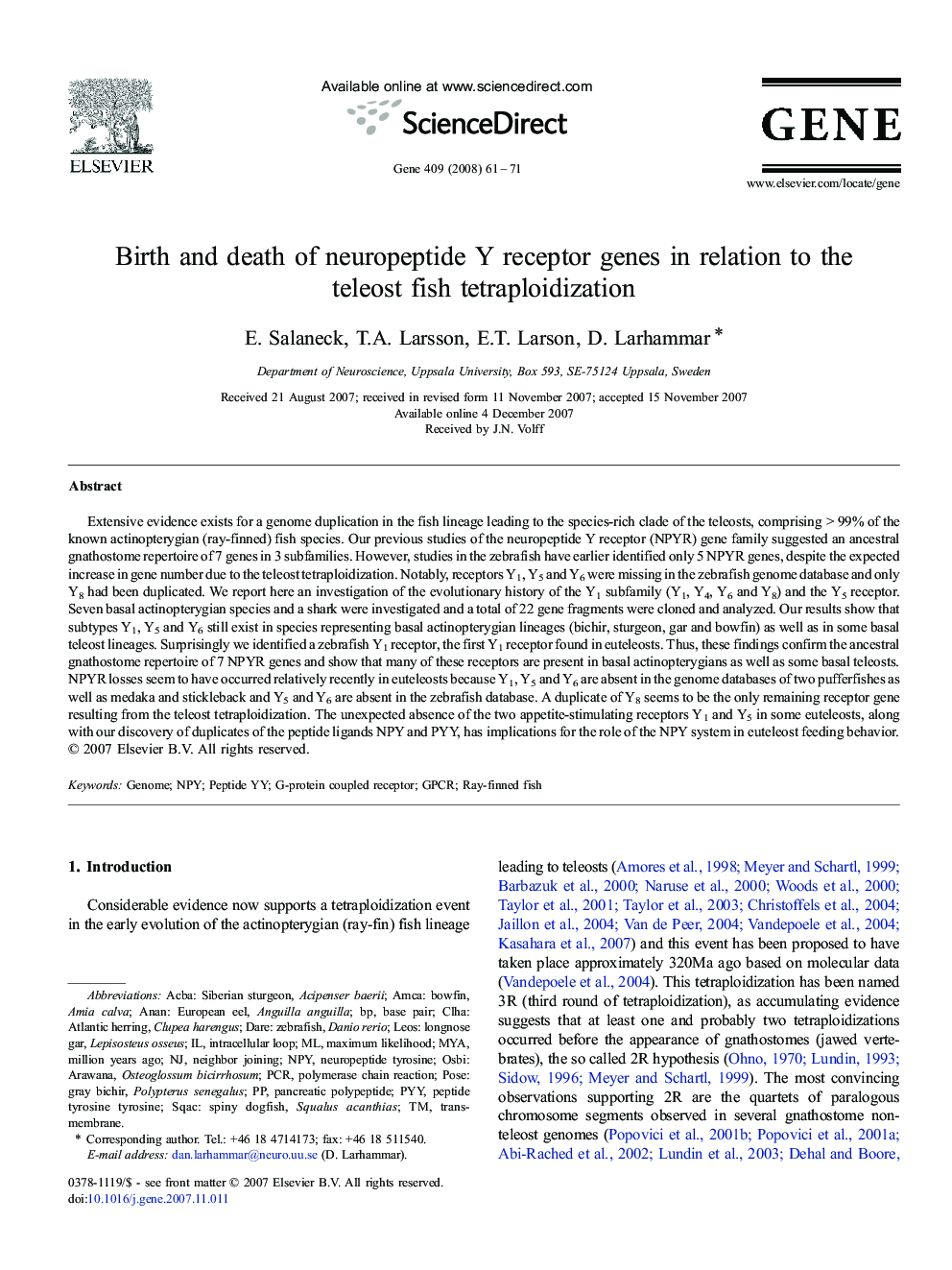| Article ID | Journal | Published Year | Pages | File Type |
|---|---|---|---|---|
| 2819465 | Gene | 2008 | 11 Pages |
Extensive evidence exists for a genome duplication in the fish lineage leading to the species-rich clade of the teleosts, comprising > 99% of the known actinopterygian (ray-finned) fish species. Our previous studies of the neuropeptide Y receptor (NPYR) gene family suggested an ancestral gnathostome repertoire of 7 genes in 3 subfamilies. However, studies in the zebrafish have earlier identified only 5 NPYR genes, despite the expected increase in gene number due to the teleost tetraploidization. Notably, receptors Y1, Y5 and Y6 were missing in the zebrafish genome database and only Y8 had been duplicated. We report here an investigation of the evolutionary history of the Y1 subfamily (Y1, Y4, Y6 and Y8) and the Y5 receptor. Seven basal actinopterygian species and a shark were investigated and a total of 22 gene fragments were cloned and analyzed. Our results show that subtypes Y1, Y5 and Y6 still exist in species representing basal actinopterygian lineages (bichir, sturgeon, gar and bowfin) as well as in some basal teleost lineages. Surprisingly we identified a zebrafish Y1 receptor, the first Y1 receptor found in euteleosts. Thus, these findings confirm the ancestral gnathostome repertoire of 7 NPYR genes and show that many of these receptors are present in basal actinopterygians as well as some basal teleosts. NPYR losses seem to have occurred relatively recently in euteleosts because Y1, Y5 and Y6 are absent in the genome databases of two pufferfishes as well as medaka and stickleback and Y5 and Y6 are absent in the zebrafish database. A duplicate of Y8 seems to be the only remaining receptor gene resulting from the teleost tetraploidization. The unexpected absence of the two appetite-stimulating receptors Y1 and Y5 in some euteleosts, along with our discovery of duplicates of the peptide ligands NPY and PYY, has implications for the role of the NPY system in euteleost feeding behavior.
